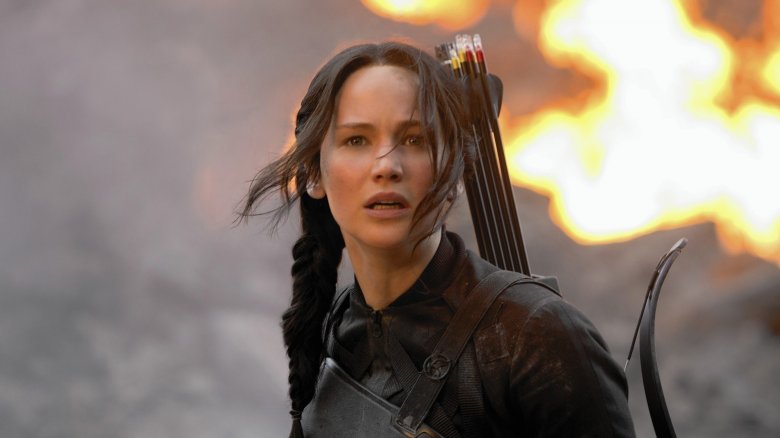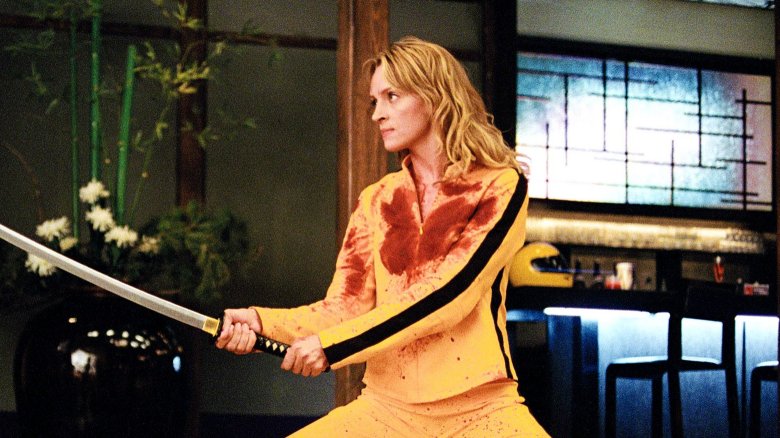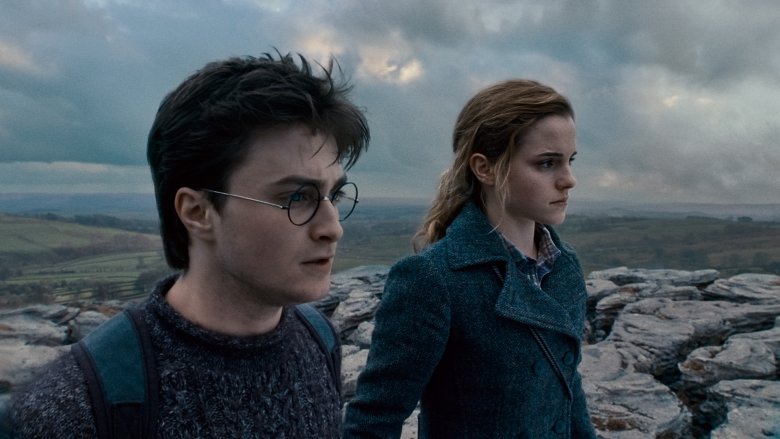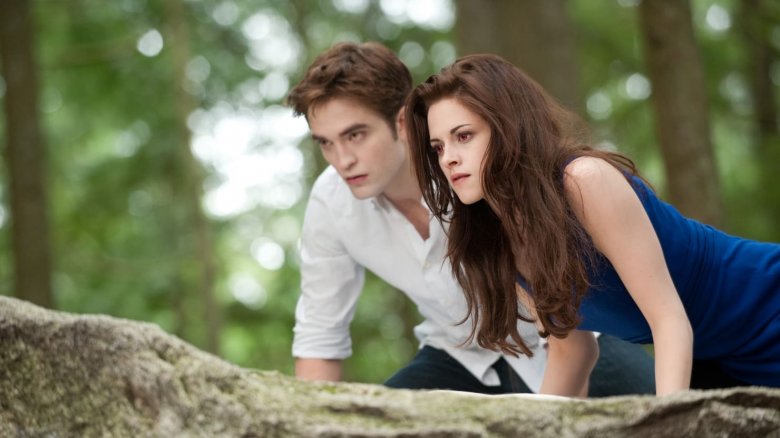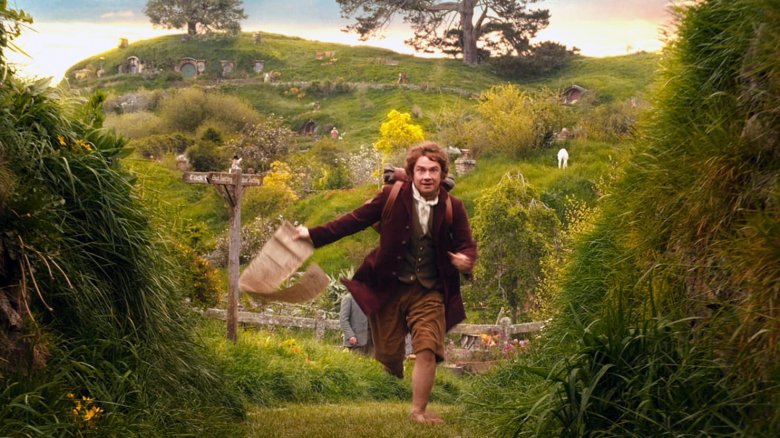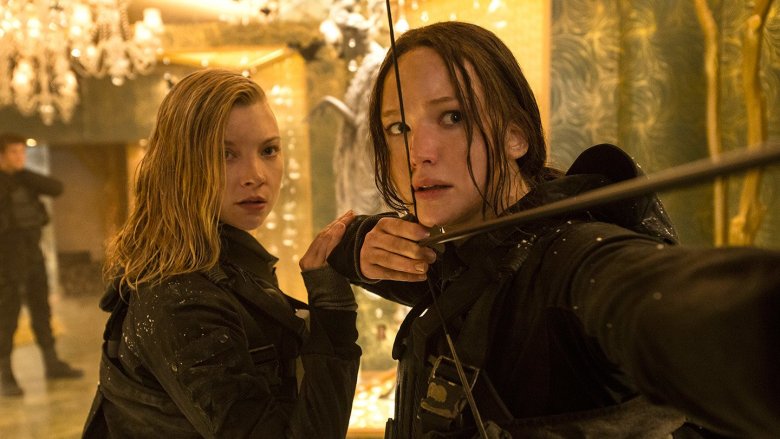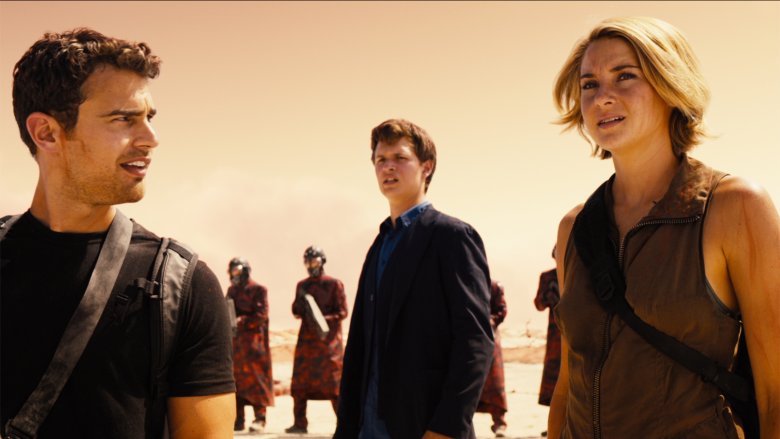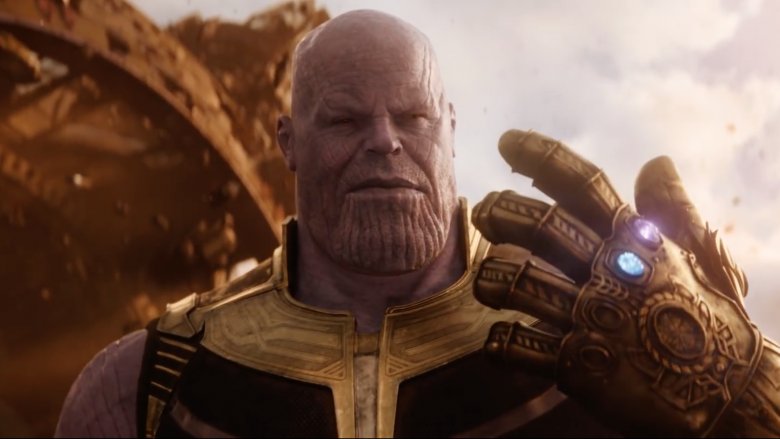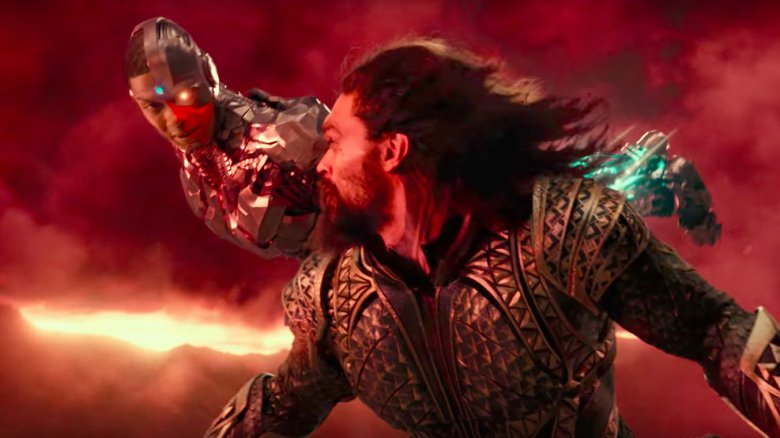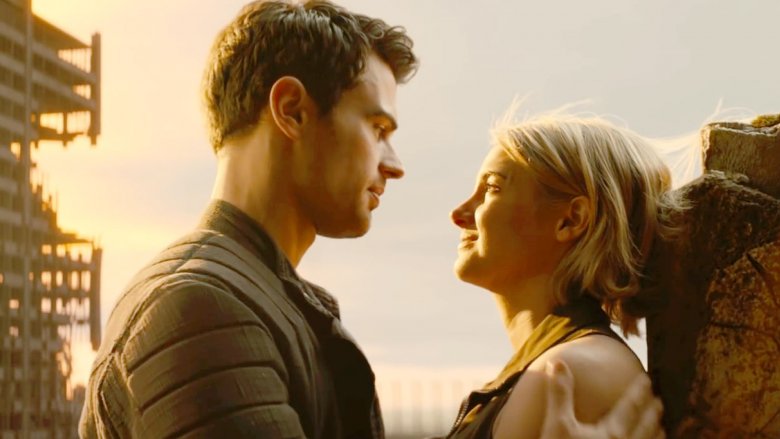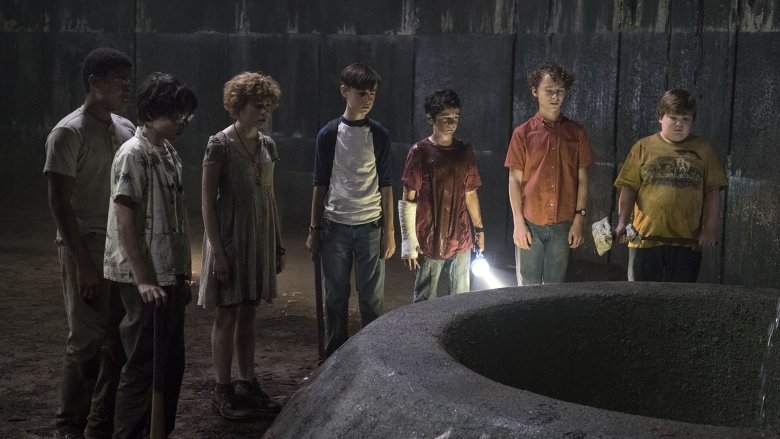Whatever Happened To The Two-Part Movie Saga?
For a brief spell in Hollywood, it seemed like two-part movie sagas were all the rage with studios, particularly when it came to series enders for book-to-film franchises. Lately, however, the trend has faded, with studios far less apt to announce two-part projects, let alone follow through on those plans. So why did the multi-part movie phase fizzle out? Let's take a look at the rise and fall of this ambitious attempt to eke out extra money-making movies.
The trend truly started in the early aughts
The Wachowski siblings' Matrix sequels, along with Quentin Tarantino and his Kill Bill series, ushered the concept of the two-parter into the mainstream in the 21st century. Multi-part movies before were few and far between (examples include Back to the Future Part II and Part III in the '90s, Richard Donner planned it with Superman: The Movie at the urging of his producers, who themselves had done the same thing with their early '70s adaptation of The Three Musketeers), but the two Matrix sequels got things into gear by filming the two-part sequel series as one massive production and releasing the pics, Reloaded and Revolutions, within six months of one another. Although the third installment would receive underwhelming attention at the theaters, the second chapter made bank.
Meanwhile, Kill Bill Vol. 1 and Kill Bill Vol. 2 came along after the filmmaker decided to turn what was meant to be a single film into two chapters based on the scale of material at hand. The decision to release the movie in two separate parts was announced in the post-production phase, when Tarantino showed then-Miramax head Harvey Weinstein half of the three-hour pic, and the two agreed it should be split. Rather than break the story up at the linear midpoint for a streamlined story, the timelines of the two parts are instead interwoven with flashbacks, each segment a piece of a larger puzzle which, together, create one character arc, thus making both films necessary for the full story. It was a lucrative decision indeed; with a total $60 million dollar budget, the films together earned more than $330 million worldwide.
Harry Potter took it to new heights
The Harry Potter adaptations were monetary magic for Warner Bros. Not only were the movies themselves must-sees for fans, consistently turning a profit, but the merchandising opportunities were (and still are) endless. As such, when it came to capping off the series with the cinematic take on the seventh and final installment of the books, Harry Potter and the Deathly Hallows, it was a no-brainer that the studio would try to squeeze an extra installment out of the series.
Citing the density of the last novel (which was roughly the same length as the three prior books but packed with a full-on wizarding war) along with the many loose ends to be tied up in the last chapter of the Harry Potter series, the studio greenlighted two Deathly Hallows movies. The final films grossed more than two billion dollars worldwide and allowed director David Yates to avoid turning the title hero's final stand against Voldemort into a frenetic fight whose pace didn't match the other films. The extended length offered by the two-part project a success, even if some fans were left underwhelmed by the long-awaited battle.
That's when other franchises started to take notes
Like Harry Potter, the Twilight films were box office gold for their studio, Summit Entertainment (later purchased by Lionsgate). The first film had been a moderately budgeted indie with little expectation of success that downright flummoxed the film world with its massive returns and sparked a frenzy of vampire/werewolf merchandise and movie mania. The last book of the Young Adult series on which the films were based had even more characters and a distinct midpoint. With that in mind, and given the success of the Deathly Hallows two-parter, the studio decided to break Breaking Dawn into two films.
While neither film marked an improvement in the critical measure of the saga, the box office results of the two Breaking Dawn parts was pretty on par with the earnings of their predecessors. Meanwhile, many fans were pleased that the two distinct phases of the book were explored in full by the films—rather than skating past honeymoon scenes fans had been waiting for to get to the climactic battle scenes, for example, the central lovers were allowed to linger in their post-wedded bliss before trouble found them again. And, with that, this extension of Harry Potter's production gamble paid off for Twilight.
The Hobbit took things even further
Although Peter Jackson may have been able to make a decent Hobbit movie as a standalone film—and fans have since cut their own three-hour version of the pic to prove it—by the time he finished shooting what was originally announced as two films, he decided he had enough material on hand to stretch into a full-on trilogy instead.
Releasing the movie as three parts meant that Warner Bros. would get a third chance to recoup its hefty production budget (the films cost a reported $745 million to make), and since they'd already succeeded at making a cinematic stretch work with Harry Potter, it was worth the extra post-production, VFX, and marketing investments to make The Hobbit a three-peat project. Although the new trilogy wasn't quite as successful or critically favored as Jackson's Lord of the Rings films, and there was a slight decline in revenue with each new Hobbit chapter, the movies still made almost three billion dollars at the box office.
The Hunger Games marked the beginning of the end
By the time the final Hunger Games adaptation came out, it was little surprise that Lionsgate opted to follow its Twilight finale formula and split the last movie into two. The first two films were critically lauded and each made over $400 million in domestic ticket sales, and besides, the two-part finale bonanza was quickly becoming the norm in the YA adaptation zone.
The key difference, however, was in the content and context of the final chapter. While Breaking Dawn certainly had its critics in the Twilight fan community—for its PG take on sex scenes and jumping the shark with so many special new vampires—Mockingjay turned the Hunger Games book formula on its head altogether and outraged a lot of its devotees. The third book broke away from the arena and relied on a deus ex machina to carry the plot forward and overall struggled with the limitations of its first-person narrative structure. There was bad buzz about the last book before the studio announced it'd take two films to see it on screen. It didn't help that the mood of the movies was one long slog through damp hopelessness, rather than the triumphant pièce de résistance the series had been building to. The films each marked a drastic drop in ticket sales, as well as home video sales, marking the first true sign of decline for the two-part film trend.
Divergent was the final straw
If splitting The Hunger Games' last chapter into two was a questionable call, the decision to make two Allegiant movies to close out the Divergent series was just plain silly. For starters, the Divergent movies weren't nearly as lucrative as Twilight or The Hunger Games to begin with, but the third book, Allegiant, was widely condemned by Veronica Roth readers upon release. Mockingjay may have bored some Hunger Games fans, but Allegiant made them outright incensed.
When Lionsgate unwisely decided to triple down on its two-part tendency with back-to-back Allegiant films, there was even a collective groan among Divergent initiates who felt that they were being bilked, again, by the same studio who had done it twice before (and this time with even more divisive source material at hand). The box office results of the first film reflected that rejection; it made just half of what Insurgent, the second installment, did in ticket sales. After that, the would-be fourth and final installment, Ascendant, was turned into a TV project and lost its director and central cast. It was a colossal letdown for fans and the studio alike and put the brakes on studios' eagerness to default to the two-part project.
The Avengers: Infinity War almost made it happen again
When The Avengers: Infinity War was first announced, it was originally poised to be a two-part film series. Once directors Anthony and Joe Russo were on board, Marvel walked back its two-parter assertion sometime later, insisting that while the Russo Brothers would be tackling two Avengers movies, they would be filmed and released as two distinct productions.
The brothers later said their intention was indeed to create two separate films and that the then-current titling of the movies as Infinity War Part I and Part II was "misleading," telling Uproxx that "the movies are two very different movies." Perhaps the creative shift had something to do with the fact that even the first installment is a massive undertaking, teeming with fan-favorite characters and intense set pieces, which means it may have just been too unwieldy to try and produce both pics at once, the way most other two-parters had done. It could also have been a result of the Russos' singular vision for the movies. Either way, the decision had been made; they'd not go forward with Part I and Part II distinctions for the fourth and fifth installments in the Avengers movie franchise.
As for Justice League, there may have been a little more to it
Like the MCU, DC's big superhero smash movie was supposed to be a two-part project as well, but the change of plans was probably inspired by very different circumstances. Justice League was originally announced in 2014 as a two-part picture series, with Zack Snyder expected to deliver Part 1 in 2017 and Part 2 in 2019. After Batman v. Superman: Dawn of Justice proved to be a critical dud and barely made back its production budget, though, the news on Justice League started to change.
First, there was a title change of Part 1 to just Justice League. Then producers started walking back on plans for a second installment, with a Justice League 2 delay ultimately attributed to Snyder wanting to work on another project of interest and to make room for Ben Affleck's standalone Batman film. Snyder, of course, later experienced a personal tragedy that pulled him away from all of those projects, and Affleck has decided not to direct a Batman one-off—and possibly not even appear in it. Given Justice League's lackluster box office results, the future of Justice League remains unclear altogether.
There's a financial risk factor that might turn studios off of the idea
As the superhero mega-projects proved, setting up a two-part film series is pretty difficult to pull off for movies of that scale. Whereas Harry Potter, Twilight, and the others were filmed back-to-back with much success and were quickly emulated, the Marvel and DC projects had simply too many parts in motion to make that happen and, as a result, became separate and distinct projects instead of two-parters.
If the movies were produced in sequence, chances are the budget for each would've been astronomical, and, as Divergent: Allegiant and Justice League's grim box office tallies have proven, there are no guarantees in Hollywood. The sheer expense and risk might just be too great for studios to take a chance on anymore.
There just aren't many current projects that fit
Even if studios were willing to roll the dice on a budget-heavy two-part film project, there are a whole lot of projects out there that fit the mold established by those movies that were successful in such an effort.
J.K. Rowling's Fantastic Beasts and Where to Find Them, for example, isn't fully based on an underlying book, so any sequels that come along, however unplanned, are still just plain old sequels and not extensions of a single installment. Meanwhile, Fifty Shades of Grey, which seems like the best guess for a fellow in the two-part finale trend, just didn't have a sophomore smash at the box office the way Twilight and The Hunger Games did to justify turning its final story into two films.
While Stephen King's It may be hefty enough for even three films in total, New Line Cinema hasn't indicated any interest in that possibility but has set the date for the pre-planned Chapter Two for 2019, as expected. Yes, it's a two-parter but not in the same sense as Deathly Hallows, Breaking Dawn, and Mockingjay were. Nevertheless, it's the closest thing to continuing the two-part film trend out there right now.
